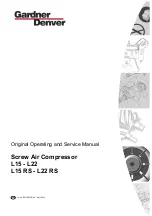
Introduction
4
THE BUS+ User Guide
Overview
The Bus Compressor Legacy
If there is a single piece of analogue processing equipment that is synonymous with SSL, it just has to be The SSL Bus Compressor.
From the very first commercially released SSL 4000 B console in 1976 and through many generations of SSL consoles that have
followed since, the Bus Compressor has always been the stalwart of the console centre section. In 1991, when SSL took its first
steps into the analogue outboard world, the FX G384 saw the Bus Compressor put into rackmount form, meaning that studios
without SSL consoles could use it. In 2002, the FX G384 received a face-lift, with a new silver front panel taking it into the X Logic
era and this was followed by the multi-channel 5.1 version the following year. In 2007, the Bus Compressor became available as
double-width module for the X-Rack series and in 2013, the Bus Compressor made it's way into the ever-popular 500-series format.
Even if you've never had chance to experience SSL Bus Compressor 'in real life', then you will have undoubtedly come across it in
plug-in form, perhaps by using the SSL Native Bus Compressor 2. One thing is for sure, throughout the course of music production
history, the Bus Compressor has always been the de facto choice for gluing a mix together.
Creating The Ultimate
For the past two and a half years we've been hard at work engineering The Bus+, on a mission to create the ultimate and most
versatile incarnation of the Bus Compressor ever seen. The bedrock of the design remains faithful, as it always has done, to the
original circuit and using this base as the starting point, we've built upon it, adding a number of unique colouration options. If you
need it to be clean and punchy like the X Logic version, it can be. If you need it to be gritty and grungy like an early 4K, it can do
that also. Or, if you need to it to do something a little different, we've got you covered. To complement the new feature set, we also
sought to bring improvements that would benefit recallability and technical performance. Firstly, this led to a decision to make all
of the pots on The Bus+ stepped. Every pot is either an 11 or 31-position stepped control and this has the obvious advantage of
making recalls easier... but there's actually more cleverness going on here. Stepped pots on their own may make recalls easier
but simply using them instead of continuous pots doesn't lead to any technical advantage per se, as they are still subject to
mechanical tolerances that can compromise stereo matching and the overall analogue performance. So we went even further,
coming up with an innovative approach to the implementation. On The Bus+, all the stepped pot positions are read by an on-board
microcontroller, meaning that no audio actually passes through the pots themselves and by doing this, we are no longer subject
to the pot tolerances. The microcontroller's job is to translate the pot positions into the required circuit configuration or electrical
parameter. To be clear, The Bus+ is a 100% analogue circuit design, it's just managed in a clever way. This approach is extended
to the front panel buttons, providing clean and reliable switching of analogue signals thanks to the use of electronic switches.
In conjunction with the technical and general feature improvements, The Bus+ incorporates an all-new Dynamic Analogue Equaliser
section, which we've named the D-EQ. The D-EQ is a powerful 2-band Dynamic EQ that can be placed before or after The Bus
Compressor. Many engineers are familiar with Dynamic EQ plug-ins inside the DAW but analogue Dynamic EQs are few and far
between. A Dynamic EQ is a more 'intelligent' form of EQ that changes the gain of an EQ band proportionally in response to the
signal level once above a set threshold. It allows you to modify the contrast between background material (under threshold) and
forward material (above threshold). The D-EQ is built upon a specially adapted version of the Bus Compressor side-chain circuit,
which contributes significantly to its powerful, yet musical sonic character. Being able to use the D-EQ in conjunction with The Bus
Compressor makes for some very exciting dynamic and tonal options indeed.
To round off the design, we decided to give The Bus+ 4 unique operating modes. Alongside the known and loved Classic Stereo
mode, a � S/C Stereo mode is available, as found in our Duality console. Mid Side allows you to tailor the final mix/master stereo
image and Dual Mono is super useful for tracking purposes or creative stem use. The Bus+ is truly a treasure chest of compression
options at your disposal.





































